Discover the Best Lacrosse Gear Pads Sticks Balls and MoreDiscover the Best Lacrosse Gear Pads Sticks Balls and More
Choosing the Right Lacrosse Stick Based on Position and Skill Level
Selecting the optimal lacrosse stick is one of the most important gear decisions for players. The right stick can give you a competitive edge, while the wrong stick can hinder your handling, passing, catching and shooting. Stick technology and designs have advanced rapidly, so there are many high-performance options available today in a wide range of sizes, flexes and shapes.
The stick you choose should be based primarily on the position you play, along with your experience level, age and personal preference. Attack players generally use lighter, more flexible sticks for quick passing and shooting, while defenders rely on sturdier sticks for solid checks. Midfielders need an all-around stick with balanced attributes. Goalies have large, heavily padded sticks for blocking shots. Beginners do best with a basic, forgiving stick, while advanced players harness specialized sticks with precision pocket placement and stringing.
Make sure to test out different lacrosse sticks to find the head size, offset, pocket type, handle material and flex that suit your game. Consult coaches, teammates and equipment guides to narrow down your options before purchasing. Proper stick sizing is also crucial, based on factors like your height and position. Investing in a high-quality stick designed for your needs and skill level will provide an advantage as you develop your lacrosse game.
Finding the Best Fit With Lacrosse Protective Gear
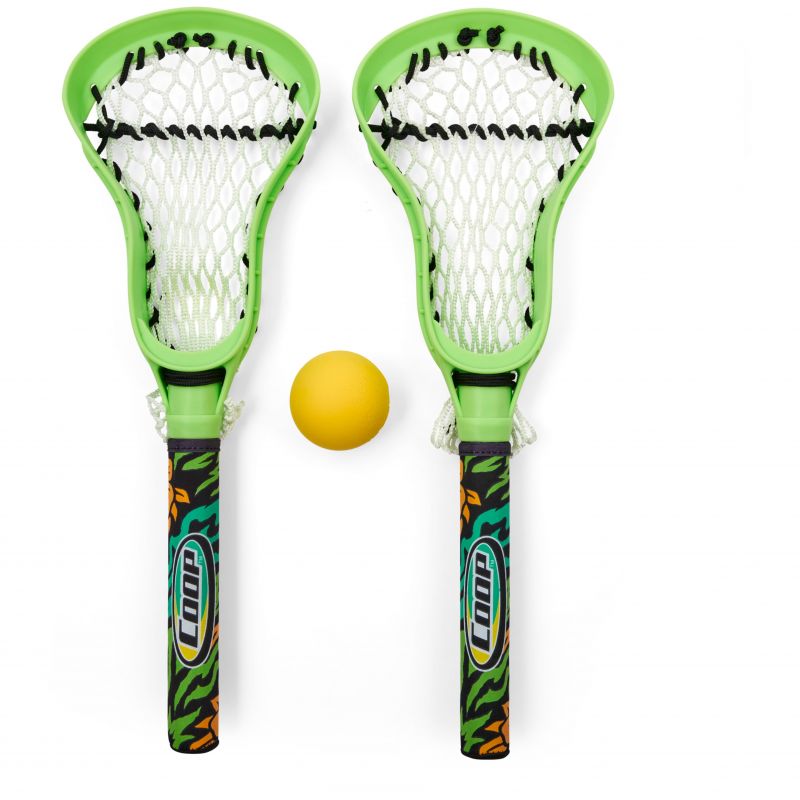
Lacrosse is a fast-paced, high-contact sport that requires players to wear protective gear to prevent injuries. Finding gear that fits properly is essential for safety and performance on the field. Ill-fitting equipment can restrict movement, fall off during play, leave gaps in protection or cause discomfort.
When shopping for lacrosse gear, try on different sizes of pads, gloves, helmets and other protectors to get the right fit. Chest and rib pads should be snug but not constricting. Arm pads need full coverage without limiting mobility. Gloves must protect hands and wrists while still enabling good stick control. Goalie gear involves more padding to cover limbs and the torso.
Ensure helmets are certified by NOCSAE and fit snugly with no slipping. Chin straps should be centered under the chin and tightened so the helmet doesn’t shift on impact. Allow enough room to comfortably wear a mouthguard. Women’s lacrosse requires less protective gear but still utilizes eyewear, mouthguards and padded headgear for safety.
Beyond fit, also consider high-quality construction and materials for durability and protection level. Get gear specialized for your position to protect the most vulnerable areas. Set a budget but don’t sacrifice safety – it’s worth investing more in vital protective equipment. Take time to properly adjust and break in gear for optimal comfort.
With the right lacrosse protective gear that’s sized and fitted for your body, you’ll have the coverage and flexibility needed to perform your best on the field.
Key Factors in Choosing Lacrosse Balls and Nets
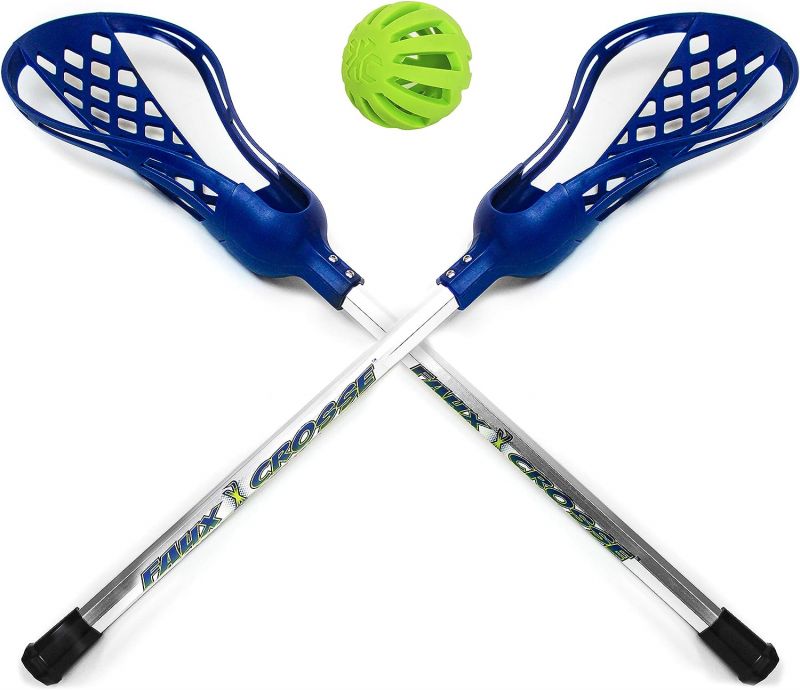
Lacrosse balls and nets are essential gear for practice and games. Balls must be durable for intense play, while nets securely trap shots on goal. Taking the time to find the right ball and net can elevate your training and game performance.
For lacrosse balls, solid rubber is the most common material for its ability to withstand checks, throws and shots. Softer balls are typically used by beginners for better handling and control. Advanced balls offer precision weighting for accurate passing and shooting. Regulation men’s balls should be 7.75 to 8 inches in circumference.
Nets come in a variety of shapes, sizes and materials. Full size regulation goals are 6 feet by 6 feet. Common net materials include nylon, polyester and cotton in multiple string thicknesses. Mesh size affects ball retention and rebound. Portable and adjustable nets are popular for home use. Net borders should be strong enough to keep shape after impact.
Additional factors in nets are weather resistance, UV protection, and bright colors for visibility. Well-constructed nets have reinforced stitching at stress points and adequately sized trapezes to cradle caught balls. Net bags and carry cases simplify transportation and storage.
For optimal performance, choose regulation size equipment suited for your skill level. Practice nets take more abuse, so durability is key. Investing in quality lacrosse balls and nets will elevate your training, instill proper technique, and give you an edge in game situations.
Must-Have Lacrosse Training Equipment for Skill Development
Skill Level Considerations
Your experience level plays a crucial role in determining the ideal stick:
- Beginners: Benefit from basic, forgiving sticks that allow for skill development
- Advanced players: Utilize specialized sticks with precision pocket placement and stringing
As you progress in your lacrosse journey, your stick requirements will evolve. Are you ready to upgrade to a more advanced stick that complements your improved skills?
Key Stick Components to Evaluate
When selecting a lacrosse stick, pay attention to these essential features:
- Head size
- Offset
- Pocket type
- Handle material
- Flex
Each of these components contributes to the stick’s overall performance. Have you experimented with different combinations to find your ideal setup?
Remember to consult coaches, teammates, and equipment guides to narrow down your options. Proper stick sizing based on your height and position is crucial for optimal control and performance.
Navigating the World of Lacrosse Protective Gear
In a high-contact sport like lacrosse, protective gear is not just an option – it’s a necessity. Finding equipment that fits properly is essential for both safety and performance on the field.

The Importance of Proper Fit
Ill-fitting gear can lead to various issues:
- Restricted movement
- Falling off during play
- Gaps in protection
- Discomfort and distraction
How can you ensure your protective gear fits correctly? Take the time to try on different sizes and styles, focusing on comfort and coverage.
Essential Protective Equipment
Let’s examine the key pieces of protective gear and their fitting requirements:
- Chest and rib pads: Should be snug but not constricting
- Arm pads: Need full coverage without limiting mobility
- Gloves: Must protect hands and wrists while enabling good stick control
- Helmets: Should fit snugly with no slipping, centered chin straps, and room for a mouthguard
- Goalie gear: Requires additional padding to cover limbs and torso
Have you recently reassessed the fit of your protective gear? As your body changes and equipment wears, regular fit checks are crucial.
Gender-Specific Equipment Considerations
Women’s lacrosse has different protective gear requirements:

- Eyewear
- Mouthguards
- Padded headgear
While less extensive than men’s gear, these items are still vital for safety. Are you using the appropriate protective equipment for your gender and league regulations?
Unlocking Peak Performance with Quality Lacrosse Balls and Nets
Lacrosse balls and nets are fundamental to both practice and gameplay. Selecting the right equipment can significantly enhance your training and on-field performance.
Choosing the Perfect Lacrosse Ball
Lacrosse balls come in various types, each suited for different purposes:
- Solid rubber: Most common, durable for intense play
- Softer balls: Ideal for beginners, offering better handling and control
- Advanced balls: Precision-weighted for accurate passing and shooting
Did you know that regulation men’s lacrosse balls should be 7.75 to 8 inches in circumference? Ensuring you practice with the correct size can improve your game-day performance.
Navigating Net Options
Lacrosse nets vary in several aspects:

- Shape and size: Regulation goals are 6 feet by 6 feet
- Materials: Common options include nylon, polyester, and cotton
- Mesh size: Affects ball retention and rebound
- Portability: Adjustable nets are popular for home use
When selecting a net, consider factors such as weather resistance, UV protection, and visibility. Have you thought about how these features might impact your practice sessions?
Durability and Performance Factors
Key elements to look for in high-quality nets include:
- Reinforced stitching at stress points
- Adequately sized trapezes to cradle caught balls
- Strong net borders to maintain shape after impact
Investing in durable equipment can save money in the long run and provide a more consistent practice experience. How often do you currently replace your lacrosse nets?
Elevating Your Game with Specialized Lacrosse Training Equipment
To truly excel in lacrosse, players need more than just the basics. Specialized training equipment can help hone skills, reinforce proper technique, and build the specific muscle memory required for success on the field.

Essential Training Tools for Skill Development
Consider incorporating these training aids into your practice routine:
- Rebounder nets: Improve passing accuracy and catching reflexes
- Agility ladders: Enhance footwork and speed
- Resistance bands: Strengthen muscles used in shooting and passing
- Target practice nets: Refine shooting precision
- Ball return systems: Increase repetitions during solo practice
Each of these tools targets specific aspects of lacrosse performance. Which areas of your game could benefit most from focused training equipment?
Innovative Technology in Lacrosse Training
Modern technology has introduced new ways to analyze and improve lacrosse skills:
- Shot speed radars: Measure and track shooting velocity
- Video analysis tools: Break down technique for detailed improvement
- Virtual reality training: Simulate game scenarios for decision-making practice
These high-tech options can provide valuable insights into your performance. Have you considered incorporating technology into your training regimen?

Creating an Effective Home Training Setup
With the right equipment, you can create a productive practice environment at home:
- Portable goal: For shooting practice in limited space
- Wall ball area: Improve stick skills and hand-eye coordination
- Weighted sticks: Build strength and control
- Reaction ball: Enhance reflexes and hand-eye coordination
A well-designed home setup can supplement team practices and accelerate skill development. What elements would you prioritize in your personal training area?
Maximizing Comfort and Performance with Lacrosse Apparel
While often overlooked, the right lacrosse apparel can significantly impact your comfort and performance on the field. From moisture-wicking materials to position-specific designs, choosing the appropriate clothing is crucial for optimal play.
Essential Lacrosse Clothing Items
A well-rounded lacrosse wardrobe should include:
- Moisture-wicking undershirts and shorts
- Breathable practice jerseys
- Compression gear for muscle support
- Weather-appropriate outerwear for varying conditions
- Specialized socks to prevent blisters and provide cushioning
Each item plays a role in keeping you comfortable and focused during play. Have you assessed your lacrosse wardrobe recently to ensure it meets your needs?
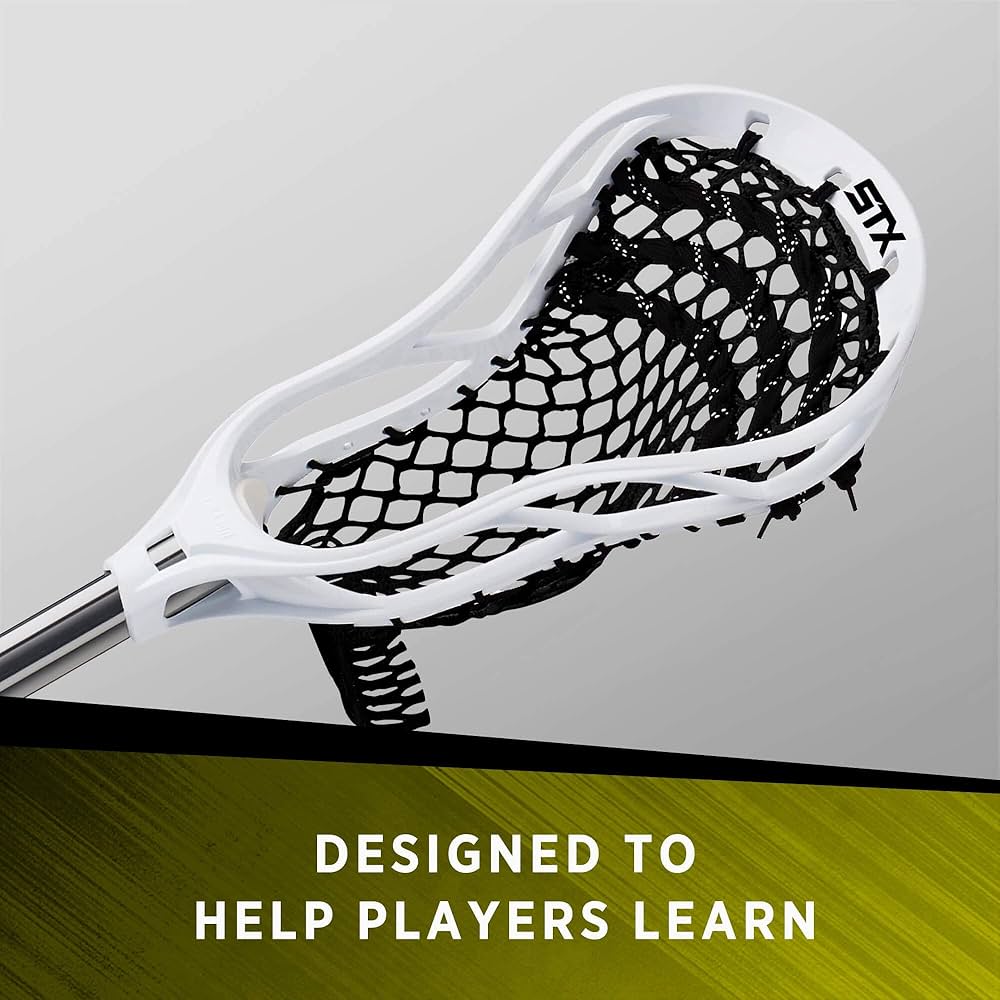
Fabric Technology in Lacrosse Apparel
Modern lacrosse clothing incorporates advanced fabric technologies:
- Moisture-wicking materials: Keep you dry by pulling sweat away from the skin
- Anti-odor treatments: Reduce bacterial growth and unpleasant smells
- UV protection: Shield your skin from harmful sun rays during outdoor play
- Stretch fabrics: Allow for unrestricted movement during intense play
These innovations can significantly enhance your comfort and performance. Are you taking advantage of the latest fabric technologies in your lacrosse gear?
Position-Specific Apparel Considerations
Different positions may benefit from specialized clothing features:
- Goalies: Extra padding in high-impact areas
- Defenders: Reinforced fabrics to withstand physical play
- Midfielders: Lightweight, breathable materials for endurance
- Attackers: Flexible fabrics for quick movements and shots
Tailoring your apparel to your position can provide a competitive edge. Have you explored position-specific clothing options to optimize your performance?

Navigating Lacrosse Equipment Regulations and Safety Standards
Understanding and adhering to equipment regulations and safety standards is crucial for both legal play and personal protection in lacrosse. These guidelines ensure a level playing field and minimize the risk of injuries.
Key Regulatory Bodies in Lacrosse
Several organizations oversee lacrosse equipment standards:
- National Operating Committee on Standards for Athletic Equipment (NOCSAE)
- US Lacrosse
- National Collegiate Athletic Association (NCAA)
- Federation of International Lacrosse (FIL)
Each body may have specific requirements for different levels of play. Are you familiar with the regulations that apply to your league or level of competition?
Essential Safety Standards for Lacrosse Equipment
Key safety standards to be aware of include:
- Helmet certification: Must meet NOCSAE standards
- Stick dimensions: Specific length and head size requirements
- Ball specifications: Weight, size, and material standards
- Protective gear requirements: Vary by gender and level of play
- Goalie equipment: Additional regulations for enhanced protection
Compliance with these standards is not just a rule – it’s a crucial aspect of player safety. When was the last time you checked your equipment against current safety standards?

Staying Updated on Equipment Regulations
Keeping informed about equipment rules is an ongoing process:
- Regularly check official websites for updates
- Consult with coaches and officials about any rule changes
- Attend equipment clinics or workshops when available
- Review league-specific guidelines before each season
Staying informed can prevent penalties and ensure you’re always playing with compliant equipment. How do you stay up-to-date with the latest lacrosse equipment regulations?
Budgeting and Investing in Quality Lacrosse Gear
While lacrosse equipment can be a significant investment, strategic budgeting and smart purchasing decisions can ensure you get the best value for your money. Quality gear not only enhances performance but can also provide better protection and durability.
Prioritizing Essential Equipment
When budgeting for lacrosse gear, prioritize these key items:
- Protective equipment (helmet, pads, gloves)
- Stick (shaft and head)
- Proper footwear
- Practice balls
- Training aids
Allocating more of your budget to critical safety gear and your primary stick can pay off in the long run. How do you currently prioritize your lacrosse equipment purchases?

Balancing Cost and Quality
Consider these factors when weighing cost against quality:
- Durability: Higher-quality items may last longer, offsetting initial costs
- Performance benefits: Premium gear can enhance your play and enjoyment
- Safety features: Never compromise on protective equipment quality
- Warranty and customer support: Can add value to your purchase
Investing in quality gear can lead to better performance and fewer replacements over time. Have you experienced the benefits of investing in higher-quality lacrosse equipment?
Smart Shopping Strategies for Lacrosse Gear
Maximize your budget with these shopping tips:
- Watch for off-season sales and discounts
- Consider gently used equipment for non-safety items
- Participate in team or club bulk purchase programs
- Explore package deals that bundle essential items
- Invest in versatile gear that can serve multiple purposes
Strategic shopping can help you acquire quality gear without breaking the bank. What money-saving techniques have you found effective when purchasing lacrosse equipment?

As you continue to develop your lacrosse skills and invest in your equipment, remember that the right gear can significantly impact your performance and enjoyment of the game. By carefully considering your position, skill level, and specific needs, you can build a collection of lacrosse equipment that will serve you well on the field. Stay informed about the latest advancements in lacrosse technology, adhere to safety standards, and make informed decisions when purchasing gear. With the right tools at your disposal, you’ll be well-equipped to excel in this dynamic and exciting sport.
Choosing the Right Lacrosse Stick Based on Position and Skill Level
Selecting the optimal lacrosse stick is one of the most important gear decisions for players. The right stick can give you a competitive edge, while the wrong stick can hinder your handling, passing, catching and shooting. Stick technology and designs have advanced rapidly, so there are many high-performance options available today in a wide range of sizes, flexes and shapes.
The stick you choose should be based primarily on the position you play, along with your experience level, age and personal preference. Attack players generally use lighter, more flexible sticks for quick passing and shooting, while defenders rely on sturdier sticks for solid checks. Midfielders need an all-around stick with balanced attributes. Goalies have large, heavily padded sticks for blocking shots. Beginners do best with a basic, forgiving stick, while advanced players harness specialized sticks with precision pocket placement and stringing.
Make sure to test out different lacrosse sticks to find the head size, offset, pocket type, handle material and flex that suit your game. Consult coaches, teammates and equipment guides to narrow down your options before purchasing. Proper stick sizing is also crucial, based on factors like your height and position. Investing in a high-quality stick designed for your needs and skill level will provide an advantage as you develop your lacrosse game.
Finding the Best Fit With Lacrosse Protective Gear

Lacrosse is a fast-paced, high-contact sport that requires players to wear protective gear to prevent injuries. Finding gear that fits properly is essential for safety and performance on the field. Ill-fitting equipment can restrict movement, fall off during play, leave gaps in protection or cause discomfort.
When shopping for lacrosse gear, try on different sizes of pads, gloves, helmets and other protectors to get the right fit. Chest and rib pads should be snug but not constricting. Arm pads need full coverage without limiting mobility. Gloves must protect hands and wrists while still enabling good stick control. Goalie gear involves more padding to cover limbs and the torso.
Ensure helmets are certified by NOCSAE and fit snugly with no slipping. Chin straps should be centered under the chin and tightened so the helmet doesn’t shift on impact. Allow enough room to comfortably wear a mouthguard. Women’s lacrosse requires less protective gear but still utilizes eyewear, mouthguards and padded headgear for safety.
Beyond fit, also consider high-quality construction and materials for durability and protection level. Get gear specialized for your position to protect the most vulnerable areas. Set a budget but don’t sacrifice safety – it’s worth investing more in vital protective equipment. Take time to properly adjust and break in gear for optimal comfort.
With the right lacrosse protective gear that’s sized and fitted for your body, you’ll have the coverage and flexibility needed to perform your best on the field.
Key Factors in Choosing Lacrosse Balls and Nets

Lacrosse balls and nets are essential gear for practice and games. Balls must be durable for intense play, while nets securely trap shots on goal. Taking the time to find the right ball and net can elevate your training and game performance.
For lacrosse balls, solid rubber is the most common material for its ability to withstand checks, throws and shots. Softer balls are typically used by beginners for better handling and control. Advanced balls offer precision weighting for accurate passing and shooting. Regulation men’s balls should be 7.75 to 8 inches in circumference.
Nets come in a variety of shapes, sizes and materials. Full size regulation goals are 6 feet by 6 feet. Common net materials include nylon, polyester and cotton in multiple string thicknesses. Mesh size affects ball retention and rebound. Portable and adjustable nets are popular for home use. Net borders should be strong enough to keep shape after impact.
Additional factors in nets are weather resistance, UV protection, and bright colors for visibility. Well-constructed nets have reinforced stitching at stress points and adequately sized trapezes to cradle caught balls. Net bags and carry cases simplify transportation and storage.
For optimal performance, choose regulation size equipment suited for your skill level. Practice nets take more abuse, so durability is key. Investing in quality lacrosse balls and nets will elevate your training, instill proper technique, and give you an edge in game situations.
Must-Have Lacrosse Training Equipment for Skill Development
Beyond the basics of a stick, ball, and appropriate gear, lacrosse players benefit tremendously from using specialized training equipment. Honing skills requires the right tools to reinforce proper technique, build muscle memory, improve handling and work on position-specific drills.
Essential lacrosse training equipment includes rebound nets to develop catching, cradling, shooting accuracy, and quick reactions. Ball stop nets safely absorb high-speed shots during shooting practice. Agility ladders and cones build footwork. Weighted balls increase wrist and arm strength for harder passes and checks.
Goalies have unique training needs fulfilled by reaction balls, oversized net targets, and rebounders to mimic shots. For stick work, wraparounds strengthen cradling skills. Scoopers replicate ground ball pickup proficiency. Handle drills and ball-on-a-string exercises heighten handling ability for all positions.
Wall ball improves reaction time, hand-eye coordination and all-around stick skills. Portable goals allow shooting practice anywhere. Speed and agility equipment develops acceleration and change of direction. Strength training gear builds power for checks and shots.
With sport-specific lacrosse training tools, players can zero in on problem areas, reinforce proper technique, build game-like reflexes and take their performance to new levels.
Customizing Your Lacrosse Uniform and Style
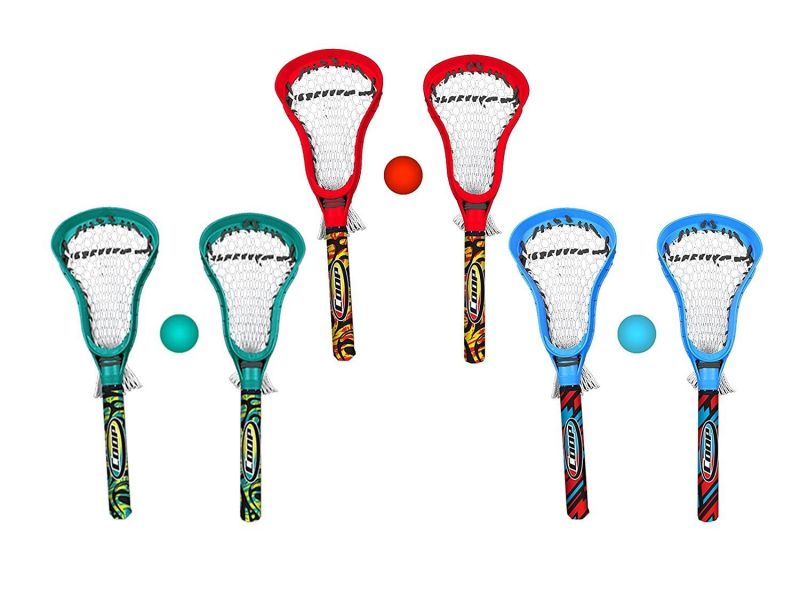
The lacrosse uniform expresses team unity and identity. Today’s gear offers more options than ever to customize your look. While adhering to league rules, players can add flair that suits their personal style.
Custom lacrosse uniforms start with your team colors and logo. Add uniform numbers and name plates for a professional appearance. Goalies often customize their oversized jerseys with vivid designs that intimidate opponents.
Eyewear comes in many colors and styles to match your vibe. Express yourself with custom mouthguards featuring your number or name. Swag out your helmet with decals and visor graphics. Use brightly colored tape on your stick handle for a signature look.
For comfort and range of motion, choose lightweight, breathable jerseys and shorts. Moisture-wicking socks keep feet dry. Cleats provide traction and quick cuts. Lacrosse bags offer ample space for all your gear.
Off the field, lacrosse lifestyle apparel allows you to rep the sport. Choose from hoodies, hats, polos, jackets and more sporting your team colors and logos. Accessories like branded water bottles and car decals showcase your lacrosse passion.
Lacrosse Field Dimensions and Goal Sizes Explained
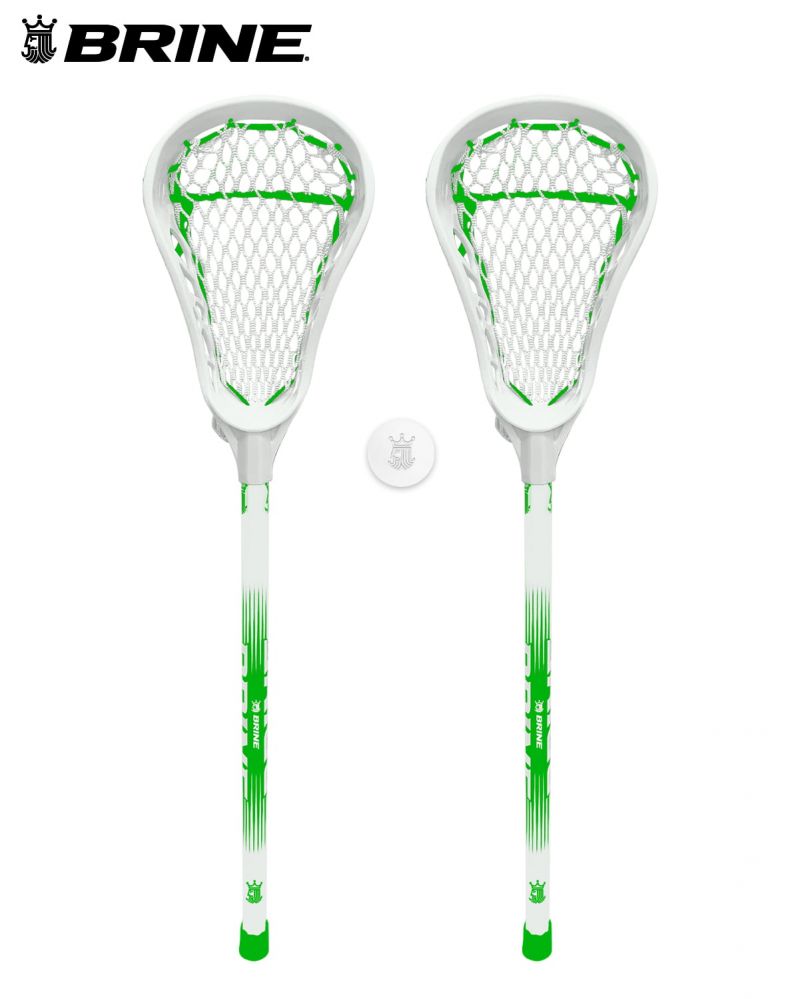
Proper lacrosse field and goal dimensions are vital for fair, structured gameplay. Leagues adhere to standardized measurements that comply with official rules and allow players to maximize their skills.
Regulation lacrosse fields are 110 yards long by 60 yards wide. The goal crease radius is 9 feet around the 6 feet by 6 feet goal. Safety end lines run 20 yards behind each goal mouth. Other field markings include midfield lines, wing lines, and specialized lines for women’s lacrosse.
Box lacrosse, played indoors, uses a condensed playing surface of 180 feet by 80 feet. Goals measure 4 feet tall and 4 feet wide. The NLL goal crease is an 8 foot radius circle. Arena perimeters must be free of obstructions for safety.
Youth leagues often adjust field and goal dimensions to be age-appropriate. Portable goals allow DIY setups, but should match regulation sizes. Nets must be firmly secured to prevent collapse or tipping that could injure players.
Knowing precise specifications for fields and objectives ensures gameplay adheres to accepted rules. Players can hone techniques knowing the spaces and targets they’ll encounter in competitive play at all levels.
Key Differences Between Box Lacrosse and Field Lacrosse
Lacrosse has two main versions – field lacrosse played outdoors and box lacrosse played in hockey arenas. Both are intense, fast-paced games with some key differences in the gameplay and equipment.
Field lacrosse is contested between two teams of 10 players each on a large outdoor field. Box lacrosse has 6 players per team in a compact indoor arena. The reduced playing space leads to a faster pace with close-quarters play.
Sticks are shorter with deeper pockets in box lacrosse for better ball control and passing in tight spaces. Field lacrosse prioritizes longer sticks for a bigger reach and quicker movement up and down the field. Field players wear minimal protective gear while box players wear ice hockey-style padding.
Box lacrosse has a shot clock and unlimited substitutions, leading to tiring shifts at maximum intensity. Field lacrosse has no shot clock and limited substitutions, requiring more endurance. Checking is restricted in women’s field lacrosse but allowed in men’s field and all box lacrosse leagues.
While box and field lacrosse share the main objective of scoring goals with a stick, their contrasting gameplay environments necessitate differing strategies, conditioning and equipment.
Top Lacrosse Brands Known for Quality

In any sport, using equipment from reputable brands ensures high performance and durability. Lacrosse has numerous companies crafting sticks, pads, balls and other gear to elevate your game.
Major lacrosse brands include STX, Maverik, Warrior, Brine, Nike, Under Armour, Adidas, Epoch, ECD, Gait, and StringKing among others. Most specialize in sticks, such as STX’s technologically advanced heads, shafts, and mesh. Maverik emphasizes customizable sticks for optimal ball control.
Warrior provides a wide selection of sturdy yet flexible sticks and protective padding. Brine focuses on innovative sticks complemented by gloves, pads, bags and uniforms. Nike, Under Armour and Adidas apply their advanced sporting goods expertise to lacrosse equipment.
Other niche brands fill specific needs. Dragonfly makes unique bamboo shafts. Epoch patented the carbon fiber Integra stick. ECD designs durable carbon fiber heads. Gait gear suits box lacrosse. StringKing strings pro-level mesh into sticks.
When sourcing your gear, look at the brand reputation along with product specs, reviews and innovation. Trusted, proven lacrosse brands invest in delivering cutting-edge, high-performing equipment year after year.
Choosing the Best Lacrosse Stick Handles
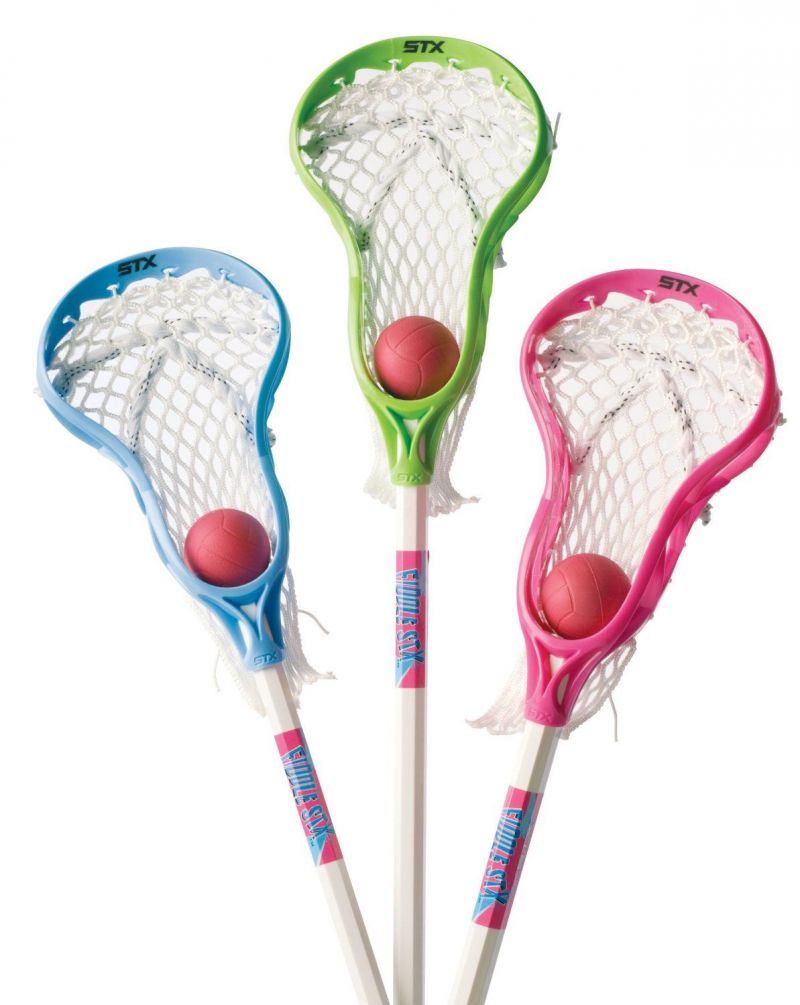
The handle is a key component of any lacrosse stick, affecting ball control, checking, shooting and passing performance. With heightened emphasis on stick engineering, handles today provide more options than ever.
Most handles are made of lightweight metal alloys like titanium and aluminum for maximum strength at minimal weight. Composite materials like fiberglass are also common. Some specialty handles use innovative materials like carbon fiber or bamboo.
Stick flex and grip affect handling. Flex profiles include stiff, soft, and variable flex. Grips come in basic tape, leather, rubberized and customized textures for personalized feel. Some handles have ergonomic shaping for added comfort and responsiveness.
For precision, handles balance strength with responsiveness. Offensive players tend to like more flexible handles for quicker release when shooting. Defensive handles focus on control and durability for stick checks. Goalie sticks have extended handles for maximum reach.
Testing different handle flexes, grips, lengths and shapes will reveal your ideal fit and feel. As stick technology continues advancing, lacrosse handles provide more ways than ever to gain an edge on the field.
Keeping Your Lacrosse Gear in Optimal Condition
Protecting your investment in lacrosse equipment ensures it remains in top playing condition for seasons to come. Proper maintenance and cleaning extends gear lifespan and performance.
Start by reading manufacturer care instructions for your specific pads, gloves, sticks and other items. Many pads and gloves are machine washable but avoid high heat drying. Sticks require more delicate cleaning by hand to avoid damage.
Inspect equipment regularly for cracks, tears or broken stitches and make repairs immediately to prevent bigger issues. Replace padding that’s compacted or worn. Tighten screws and removable parts that have come loose. Re-string sticks as mesh wears and adjust pocket depth for optimal ball control.
Wipe sticks down after each use and apply weatherproofing sticks as needed. Allow all gear to fully air dry before storage to prevent mold. Keep items stored properly in bags when not in use. Transport carefully to avoid breakage.
With attentive equipment care and maintenance, your lacrosse gear will provide many seasons of reliable performance. Take time for repairs and inspections so you always play your best and safest.
Setting Up Lacrosse Goals for Home Practice

Installing lacrosse goals at home allows for convenient shooting, passing and positional practice. With proper planning, home lacrosse goals can enhance skill development in your backyard, driveway or local park.
Determine available space and check local regulations before purchasing portable lacrosse goals. Set up goals on level terrain with ample clearance for errant shots. Anchor movable goals safely and securely per product instructions. For backyard goals, allow a safety buffer from property lines.
Full-size 6 by 6 foot regulation goals provide the most realistic practice. But more compact 4 by 4 foot or adjustable goals require less space and may suffice. Frame material affects portability and durability – steel is sturdiest while aluminum or composite nets are easier to transport.
Enhance goal safety with padding on uprights and wraparound backers to contain missed shots. Use regulation rebounder nets or less rigid netting for home setups. Angle goals to avoid unwanted rebounds. Take goals down after use and store out of harsh weather.
By researching options, measuring space and following safety guidelines, players can successfully set up lacrosse goals to practice shots, hone accuracy and develop offensive and defensive techniques.
Must-Have Lacrosse Accessories for Games and Practice
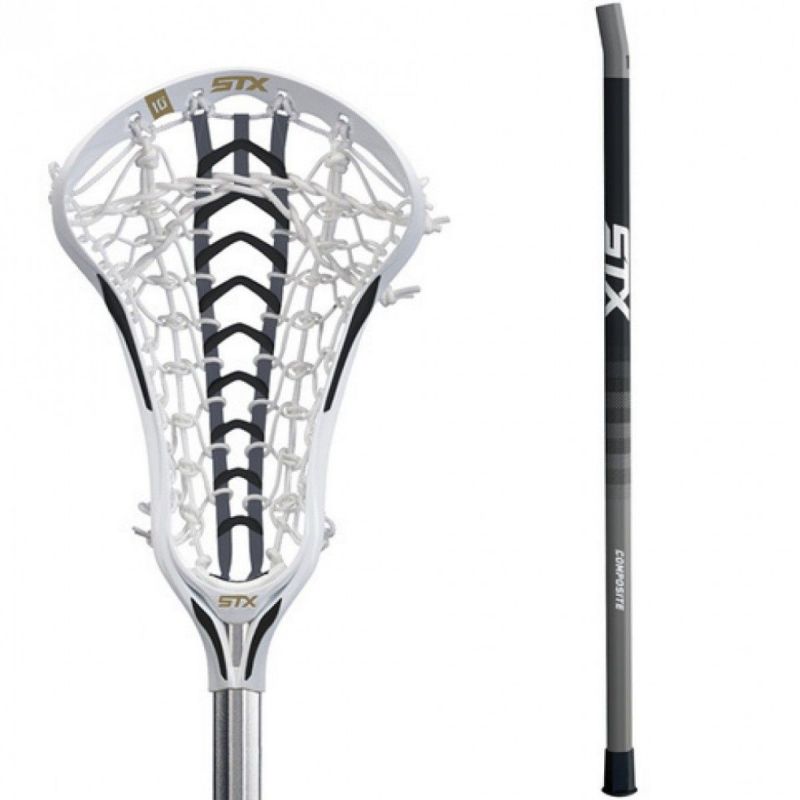
Beyond main lacrosse gear of sticks, pads, balls and goals, helpful accessories complete your equipment needs. The right extras enhance performance, safety and convenience.
Carry gear easily with lacrosse bags including backpacks, duffels and mesh bags. Keep gear organized in compartments and pockets designed for sticks, helmets and pads. Hydration-ready bags have slots for water bottles to stay refreshed.
Accessorize your stick with personalized decals, wraps and tape for improved grip and style. Protect stringing with weather-resistant mesh covers. Use training tools like ball stop nets, bounce backs and stick weights tailored to your position.
Practice your hardest with padded gloves for stick drills and goalies. Wristbands catch sweat while silicone helmet strips keep eyewear stable. Cold gear like performance sleeves or leggings extends the season.
Stay safer with helmet repair kits, replacement screws, extra pads and roll-on body glide. Carry spare laces, athletic tape, first aid items and snacks for convenience. With smart lacrosse accessories, elevate your readiness for games or training.
Lacrosse Protective Gear Needs by Position
Since lacrosse is a contact sport, players require protective equipment. The gear needed varies by playing position based on their field roles and vulnerability.
As the most exposed players, goalies wear extensive padded clothing, throat guards and chest protectors. Goalie helmets have full facial protection. Goalie gloves have extra padding to block shots.
Defensemen, who battle on the frontlines, prioritize arm guards and shoulder pads for checks and blocks. Rugged helmets with face masks protect from shots while cleats provide traction for movement. Defense sticks have more flexible heads for quicker poke checks.
Midfielders cover the entire field so need balanced gear for speed, padding and ventilation. They tend to use lighter shoulder pads along with sturdy gloves and elbow pads. Durable helmets stand up to shots and collisions.
Attack players favor lighter equipment since they see less contact. Padding focuses on shoulders and elbows for protection during checks. Their gloves enable flexibility when stickhandling and shooting in tight spaces around the net.
Getting gear suited for your position ensures you have the right protection while allowing athletic movement and specialized play.
Finding Lacrosse Gear Deals Online
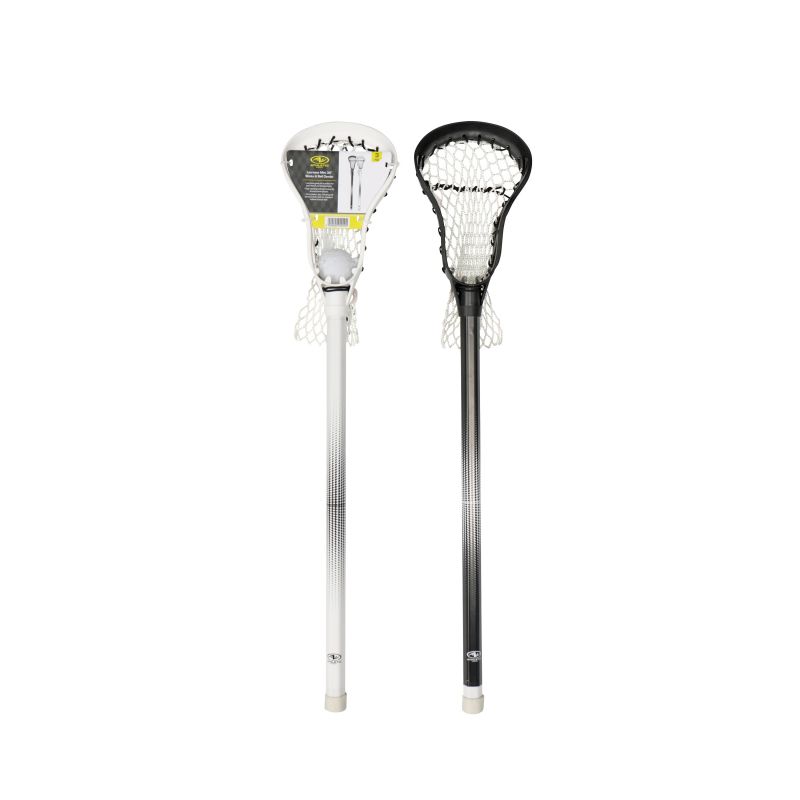
As with most sports, lacrosse gear can get pricey. Shopping online opens opportunities to get quality equipment without spending a fortune.
Check brand websites for product selection along with sales, closeouts, and coupon codes that lower costs. Sign up for email lists to receive special discount offers. Amazon and general sporting goods sites like Dick’s often run lacrosse promotions.
Shop end-of-season clearance sales in winter for leftover spring and summer stock. Search resale sites like SidelineSwap, Play It Again Sports and Craigslist for quality used gear at steep discounts. Local buy/sell/trade groups can connect you to deals in your community.
To maximize savings, know exactly what you need before shopping so you can recognize good values. Compare prices across multiple vendors. Avoid cheap gear that won’t last or protect well just to save money.
With online research, price monitoring, and flexibility on prior-year models, you can outfit yourself with complete lacrosse gear without overspending. Use savings on extras like training tools to elevate your skills.
Gift Ideas for the Lacrosse Player in Your Life
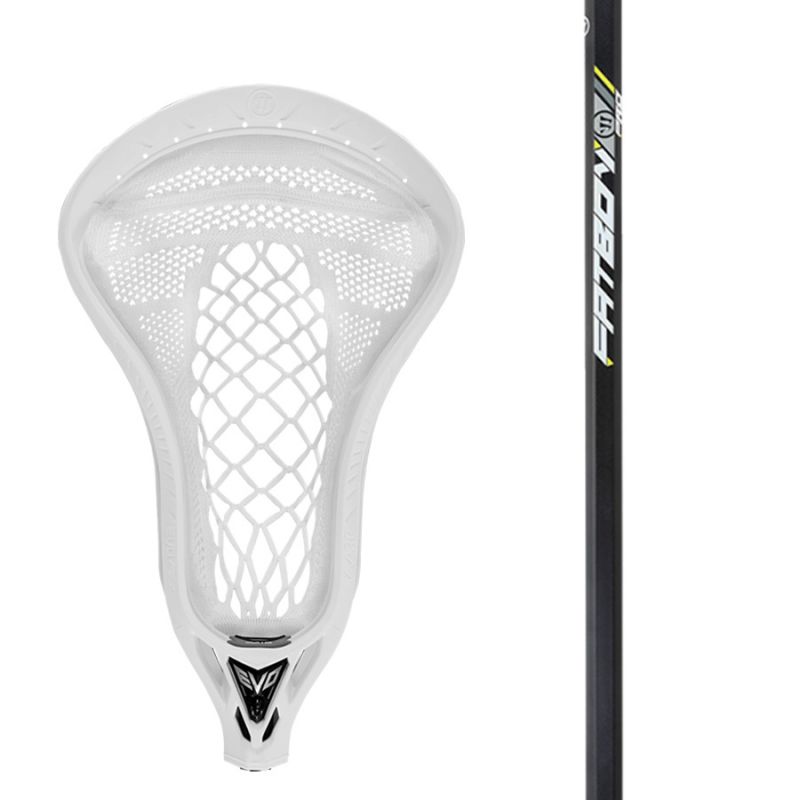
Knowing what to buy for the lacrosse fanatic in your world can be challenging. Useful gift ideas tailored to the sport will impress any player or enthusiast.
Custom lacrosse gear like a printed stick, gloves with their name or number, or a jersey with personalization make great keepsake gifts. Accessories like branded sweatbands, locker tags or auto decals connect their passion to daily life.
Help players elevate their skills with training equipment like rebound nets, stick weights, agility ladders and strength gear. Surprise them with new heads, shafts, mesh or other customizable stick components to build their dream stick.
For gear transport, gifts like lacrosse duffle bags, backpacks and cargo haulers simplify logistics. Inclement weather gifts such as cold gear tights, performance jackets and waterproof boots extend playtime.
Lacrosse lover gifts include branded home decor, bottle openers, apparel in their team colors or coffee mugs for display. Share the sport together with tickets to a college, pro or local game for lasting memories.